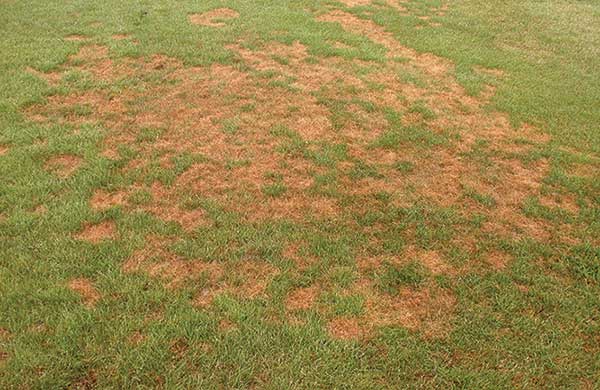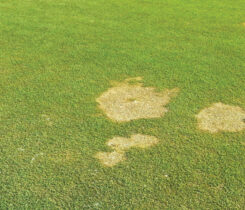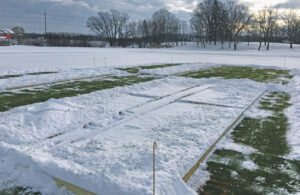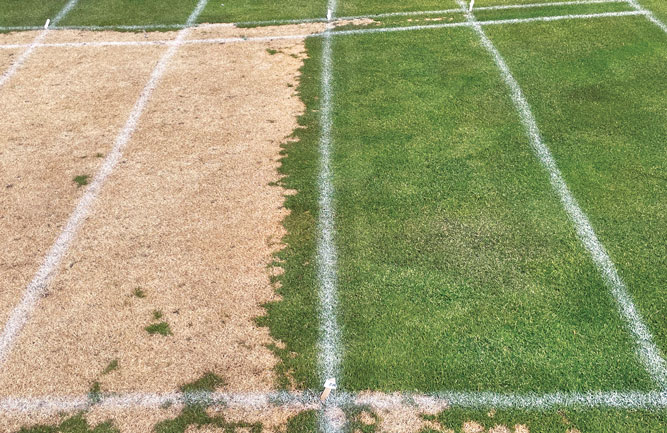Super Science: Looking back on 2021
Golf has done well during the COVID-19 pandemic, and there’s been a slow return to business as usual, but managing golf courses continues to be a challenge with changing climate, drought and the pest problems invading turfgrass. Again, it is time to look back on the research articles we covered in Golfdom during 2021.
Covers and batting to increase winter soil temperatures on ultradwarf bermudagrass putting greens
By Mike Richardson, Ph.D., Eric DeBoer, Doug Karcher, Ph.D., and Thomas Walton, University of Arkansas, Department of Horticulture
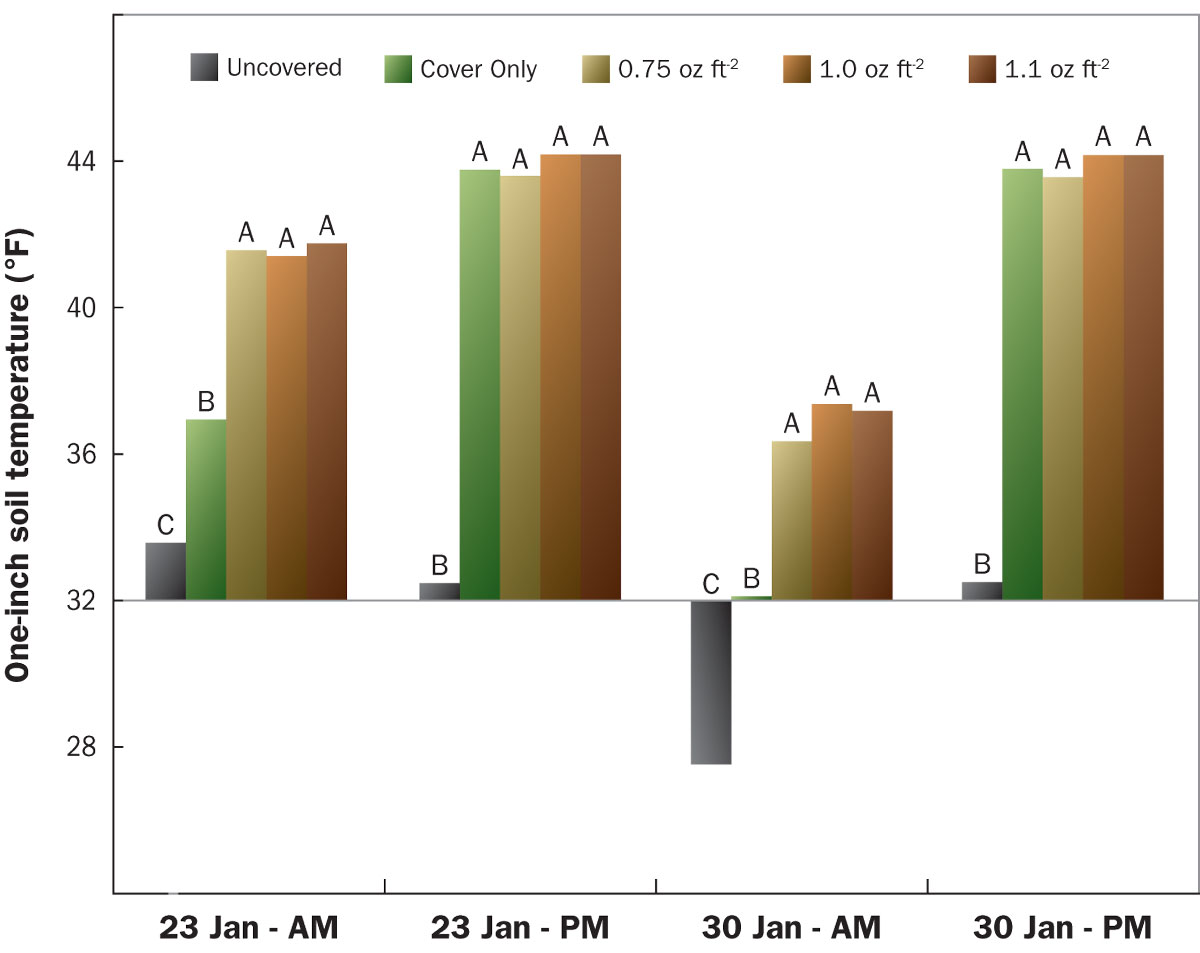
Figure 1 Effect of protective covers and various weights of batting fabric on the morning and afternoon soil temperature of an ultradwarf bermudagrass green on two dates in 2019. Different letters within each bar grouping indicate a significant difference.
- Covers on ultradwarf putting greens prevent winter damage.
- Reducing the predicted low temperature to cover greens from 25 degrees F to 15 degrees F does not significantly reduce winter survival.
- Winterkill patterns suggest that cover thickness or the presence of air under the covers improve winter survival.
- Batting increased the 1-inch (2.5-cm) depth soil temperature by 4
to 5 degrees F (2 to 3 degrees C) compared to the cover-only control on some dates; however, there are no statistical differences among the batting weight treatments (Figure 1).
Factors affecting fungicide performance on golf course turf
By James P. Kerns, Ph.D., Travis W. Gannon, Ph.D. and Cameron M. Stephens, North Carolina
State University
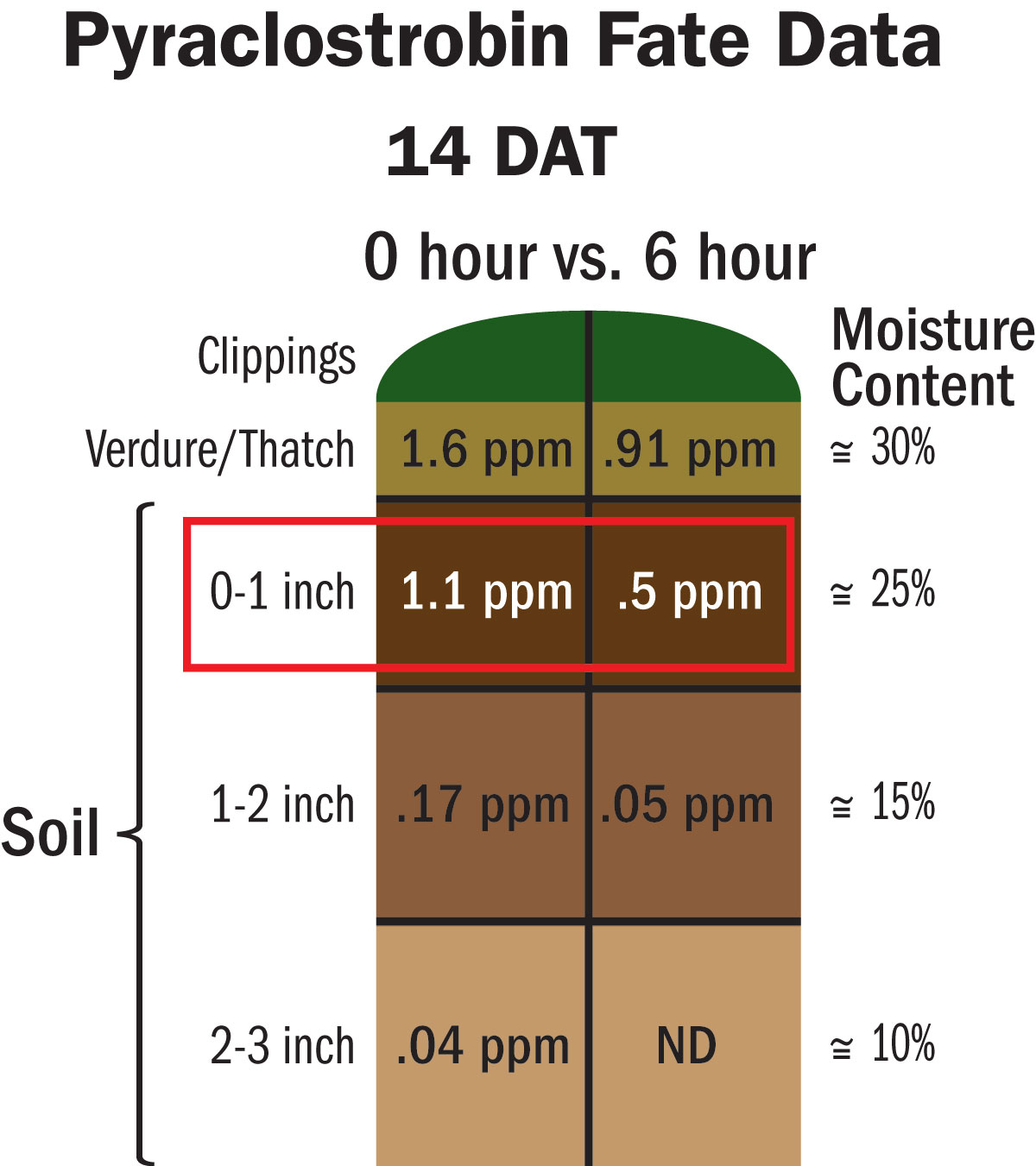
Figure 2 Pyraclostrobin residue data from a sample core collected 14 days after treatment. Percent of applied data is converted to ppm at each depth. An in vitro evaluation of Gaeumannomyces graminis on pyraclostrobin-amended media demonstrated that 1 ppm completely inhibits fungal growth.
- We found very little fungicide within removed clippings when delaying mowing events.
- It is challenging to move fungicide past the remaining verdure and thatch, regardless of irrigation treatment.
- Immediate irrigation resulted in more fungicide movement past the above-ground vegetation.
- Small differences in fungicide movement could dramatically impact the efficacy of fungicides on golf course putting greens (Figure 2).
Control of ground pearls using application sequences of different insecticides
By David Kopec, Ph.D., a retired extension specialist in Turfgrass Science and Management from the University of Arizona in Tucson, Ariz. (1985–2018)
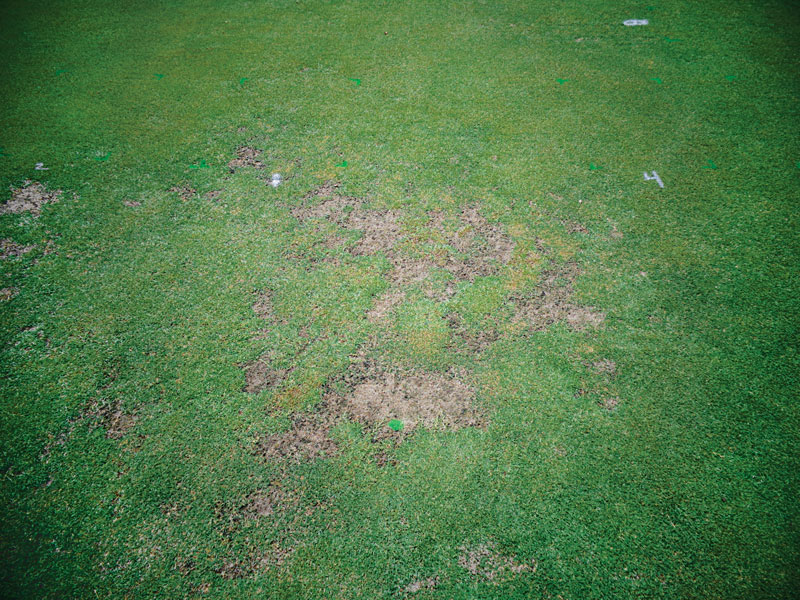
Photo 1 Damage caused by ground pearls on a bermudagrass putting green. Symptoms often include initial thinning and texture changes, followed by loss of turf in the forms of straw or bare soil.
- Ground pearls have become extremely problematic to control on golf courses because of removing many older turfgrass insecticides with environmental issues (Photo 1).
- Ground pearl adults (when they are exposed as nonencysted egg-laying females) were severely reduced in numbers by rotational and closely spaced single applications of Zylam, Avid and Ference under desert conditions.
- This research presents a protocol of product use sequences to achieve significantly enhanced ground pearl control.
Preventive fungicide applications for the control of dollar spot at fairway height
By Paul Koch, Ph.D., and Kurt Hockemeyer, University of Wisconsin
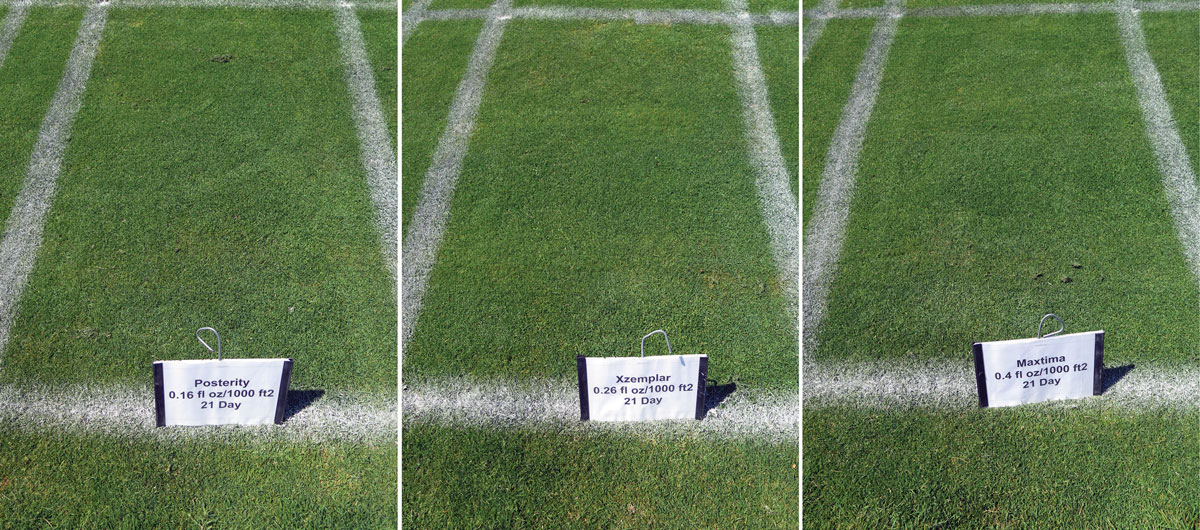
Photo 2 Recently released Posterity, Xzemplar and Maxtima provided effective dollar spot control. (Photo: Paul Koch)
- All of the treatments provided some level of control relative to the nontreated plot.
- None of the treatments were phytotoxic to creeping bentgrass maintained as a golf course fairway.
- Twelve of the 21 treatments provided effective seasonlong dollar spot control (less than five spots per plot).
- Recently released Posterity, Xzemplar, Maxtima and the combination product Traction provided effective dollar spot control. (Photo 2)
Guiding PGR applications by growing degree days
By William C. Kreuser, Ph.D., assistant professor, extension turfgrass specialist at the University of Nebraska
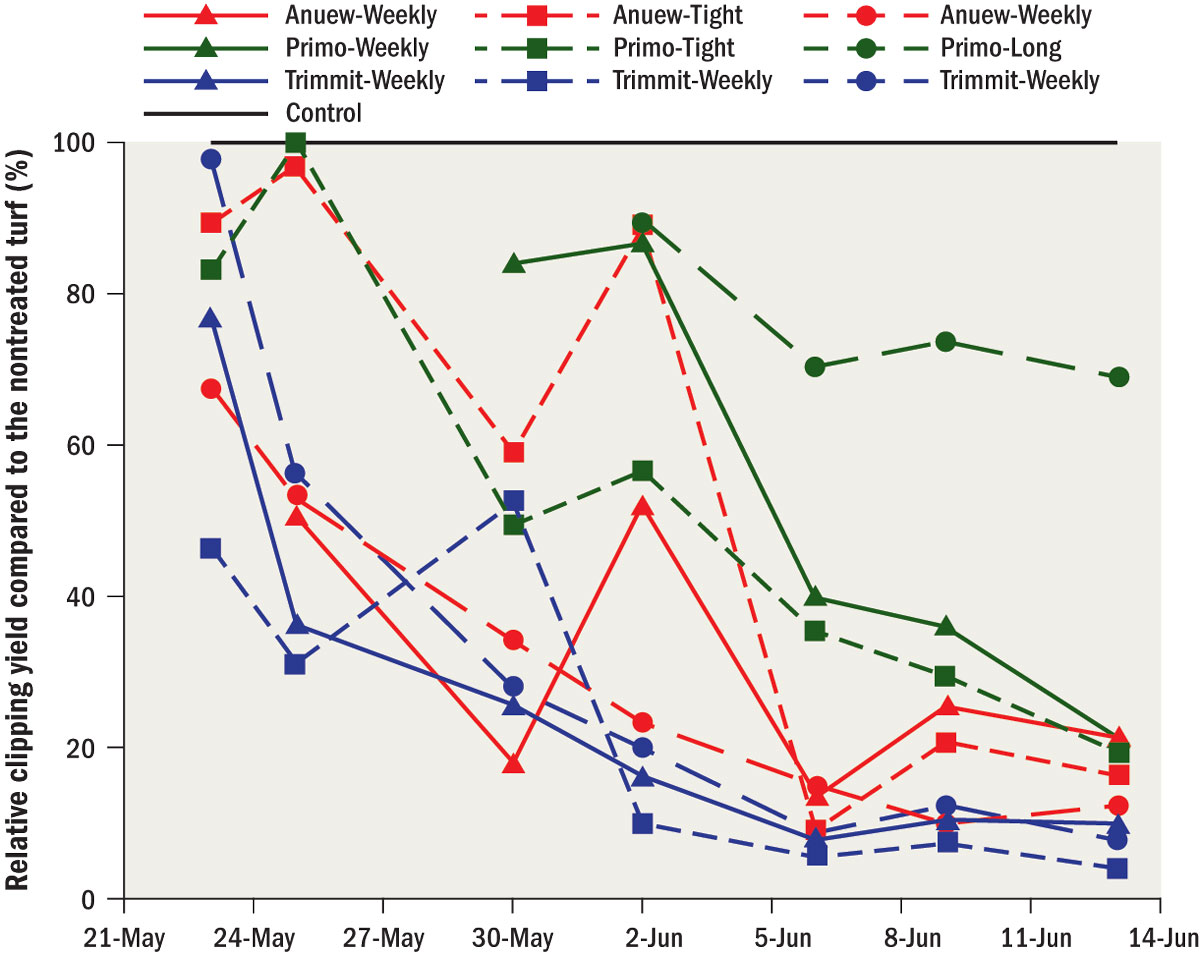
Figure 3 The impact of different PGR reapplication models on the relative clipping yield suppression of a creeping bentgrass fairway mowed at 0.400 inch.
- We tested a model to estimate the amount of PGR remaining in the plant when the PGRs were applied before their ideal reapplication interval. A half-life approach model was used to schedule the PGR application rate. The model tested resulted in an intensification of clipping yield suppression and increased phytotoxicity over time. The results indicate the models were too aggressive.
- A new PGR-GDD model accounts for the clipping yield suppression of multiple PGR and DMI fungicide applications. The model was developed from a combination of various datasets and had an R2 value of 0.763.
- In 2020, the new PGR model was used to evaluate putting green performance when PGR ingredients were mixed. Mixing Primo with Trimmit increased green speed by 8.4 inches compared to the nontreated control. This mixture combined with higher levels of nitrogen fertilizer sustained high putting green stand density and acceptable color. We are replicating this experiment in 2021 (Figure 3).
Light and frequent topdressing programs
By Brian Whitlark, an agronomist in the USGA Green Section West Region, and Cole Thompson, Ph.D., assistant director of USGA Green Section Research
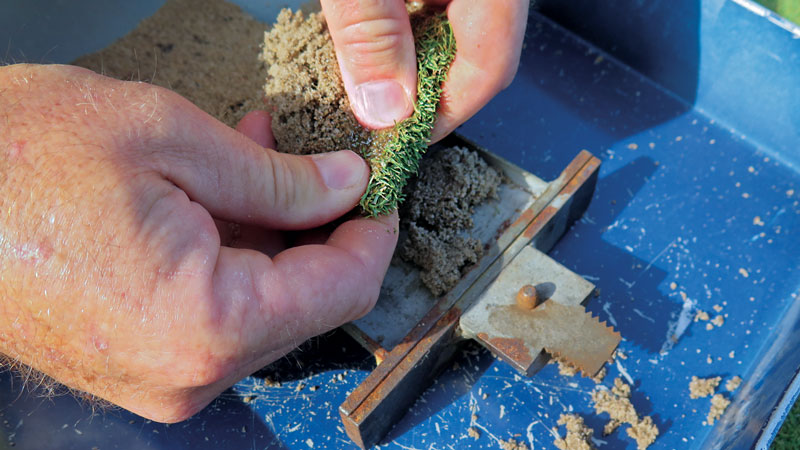
Photo 3 Visible water squeezed from a putting green’s surface layer is a good indication that more sand is required to dilute thatch and organic matter. (Photo: Brian Whitlark, USGA Green Section)
- Sand topdressing is the most important cultural practice for managing the organic matter.
- Recent research confirms the benefits of light and frequent sand topdressing programs that provide less immediate disruption, better playing conditions and better rootzone characteristics over time.
- It is critical to assess putting green performance and the quality of the rootzone to determine if circumstances warrant an accelerated program for improvement beyond what is possible with light and frequent topdressing.
- Regardless of the selected top-dressing program, silica sand is preferred because of its tolerance to weathering.
- Aeration backfill should closely match the physical characteristics of the sand used at construction. Still, routine topdressing sand can be somewhat less coarse to ease incorporation and reduce wear on mowers. Ongoing research suggests that this will not impede infiltration or cause an overly wet surface.
- Regardless of the selected top-dressing program, it is wise to assess rootzone physical properties regularly by submitting core samples to a soil-testing laboratory (Photo 3).
The bizarro snow mold year
By Paul Koch, Ph.D., University of Wisconsin
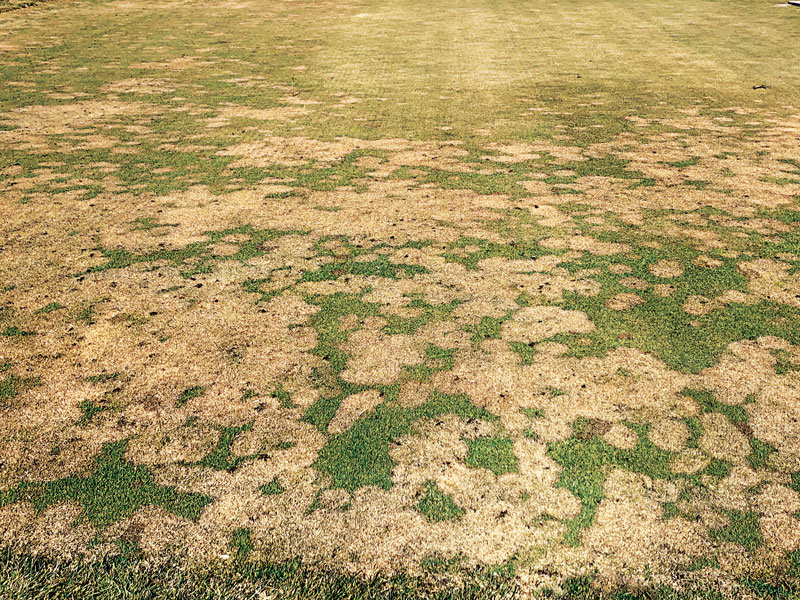
Photo 4 Snow mold pressure in southern Great Lakes locations like Madison, Wis., was severe in 2021. (Photo: Paul Koch, Ph.D.)
- The conditions were perfect for snow mold to develop across Chicago and much of the southern Great Lakes. In January, a deep and insulating snowpack prevented the February cold snap from affecting fungal growth at the turf surface.
- In January and February, the snow machine never kicked on in Wausau and much of the northern Great Lakes. The February cold snap killed off most of the snow mold fungi and prevented snow mold from developing (Photo 4).
- Despite the spotty snow mold development across the region, last winter’s University of Wisconsin snow mold research still provided excellent product evaluation results on pink snow mold (Microdochium nivale) from our Madison, Wis., location and on gray snow mold (Typhula incarnata) from our Marquette, Minn., location.
Crabgrass weed suppression in fine fescues
By Florence Breuillin-Sessoms, Dominic P. Petrella, Jon M. Trappe, Nicole T. Mihelich, Aaron J. Patton and Eric Watkins
- Festuca rubra taxa are more crabgrass suppressive than F. ovina.
- There is considerable variability in weed suppression across entries within each fine fescue taxon.
- Opportunities exist for plant breeders to develop new weed suppressive cultivars.
- Future studies should aim to separate allelopathic effects from plant competition.
Pythium in golf course putting greens
By Jim Kerns, Ph.D., professor and extension specialist in Turfgrass Pathology at North Carolina
State University
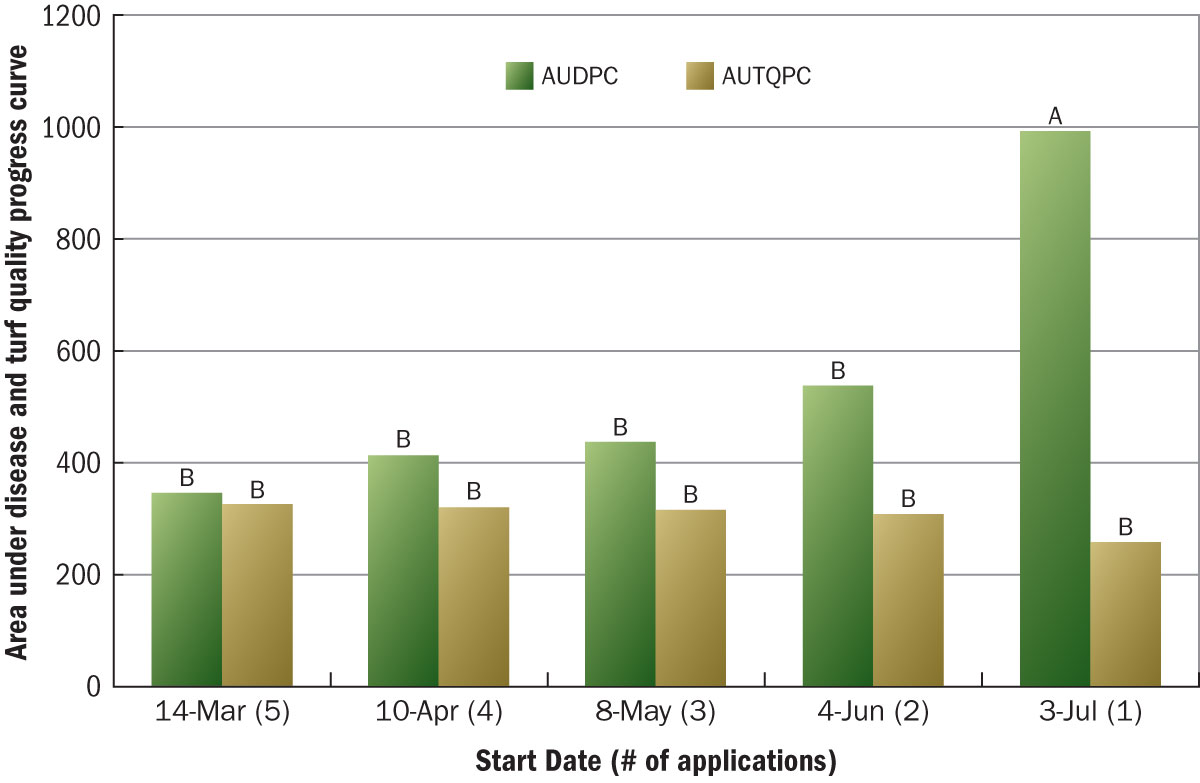
Figure 4 Efficacy of preventive cyazofamid applications for Pythium root rot in creeping bentgrass. Applications started in either March, April, May, June or July and were reapplied monthly until August. All applications were irrigated immediately with 1/8 inch of water, and cyazofamid was applied at 0.45 fl oz/1000 ft2.
- Identification of Pythium species during the summer months is challenging as most isolates recovered were nonpathogenic species such as Pythium torulosum.
- Based on the limited data thus far, we hypothesize that Pythium infection precedes symptom development in creeping bentgrass.
- P. torulosum growth was only inhibited by cyazofamid (Segway), fluazinam (Secure) and Terrazole (etridiazole) (Figure 4).
- In vitro sensitivity varied among Pythium species, but all were extremely sensitive to cyazofamid.









